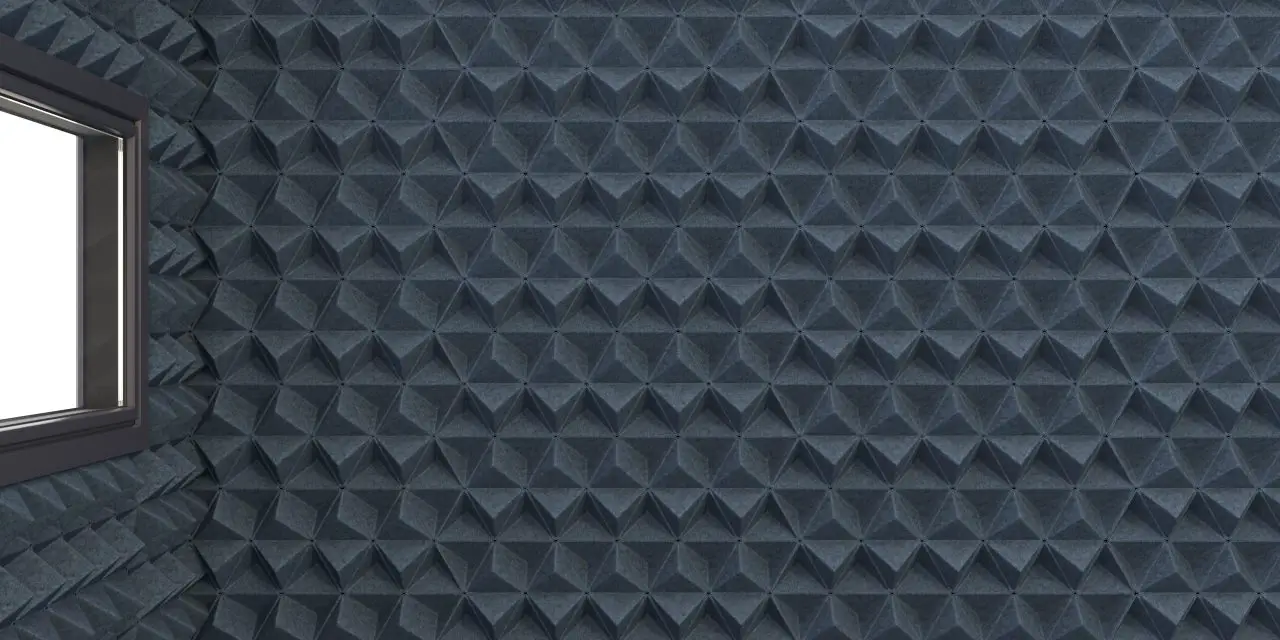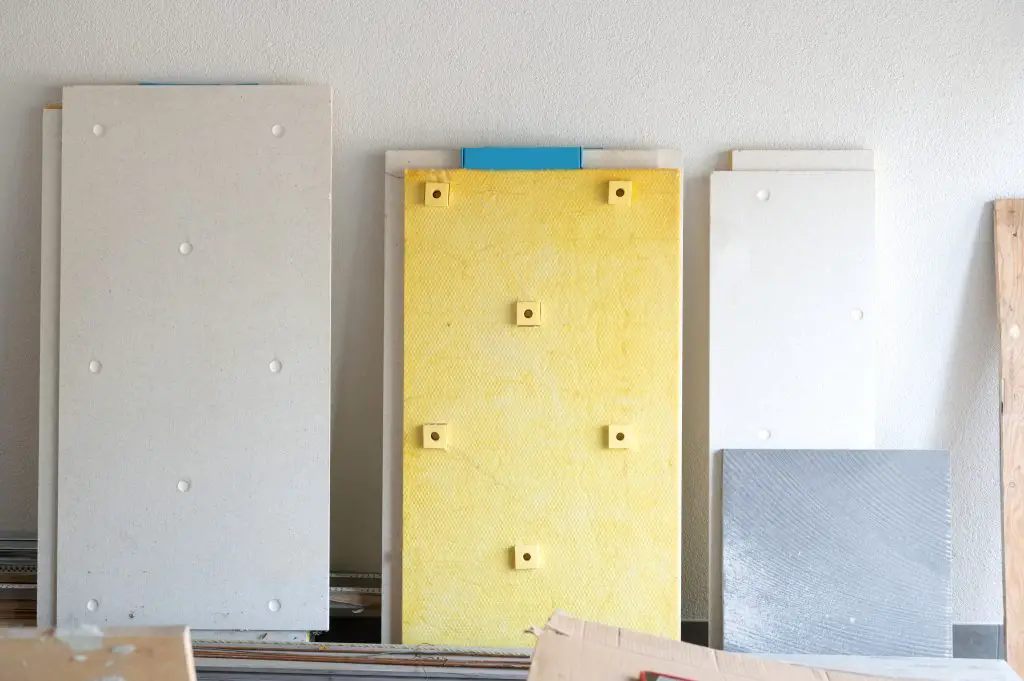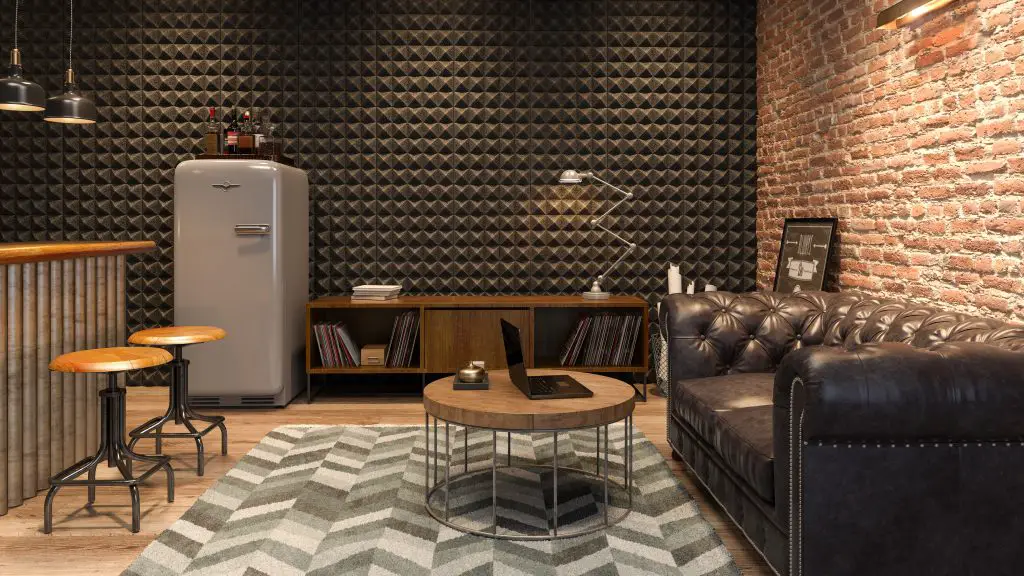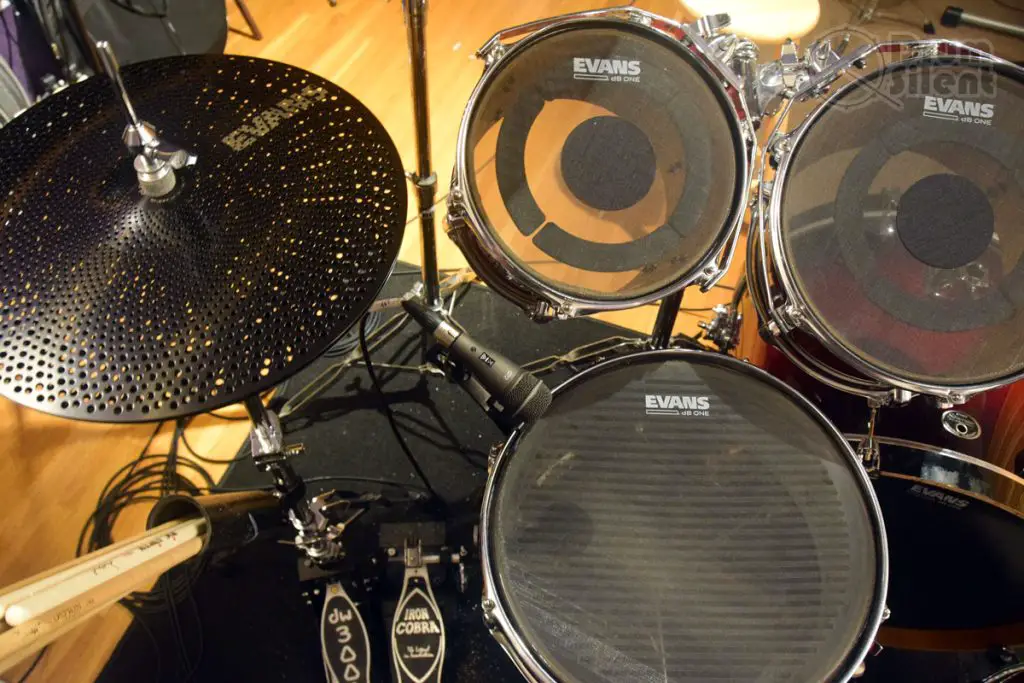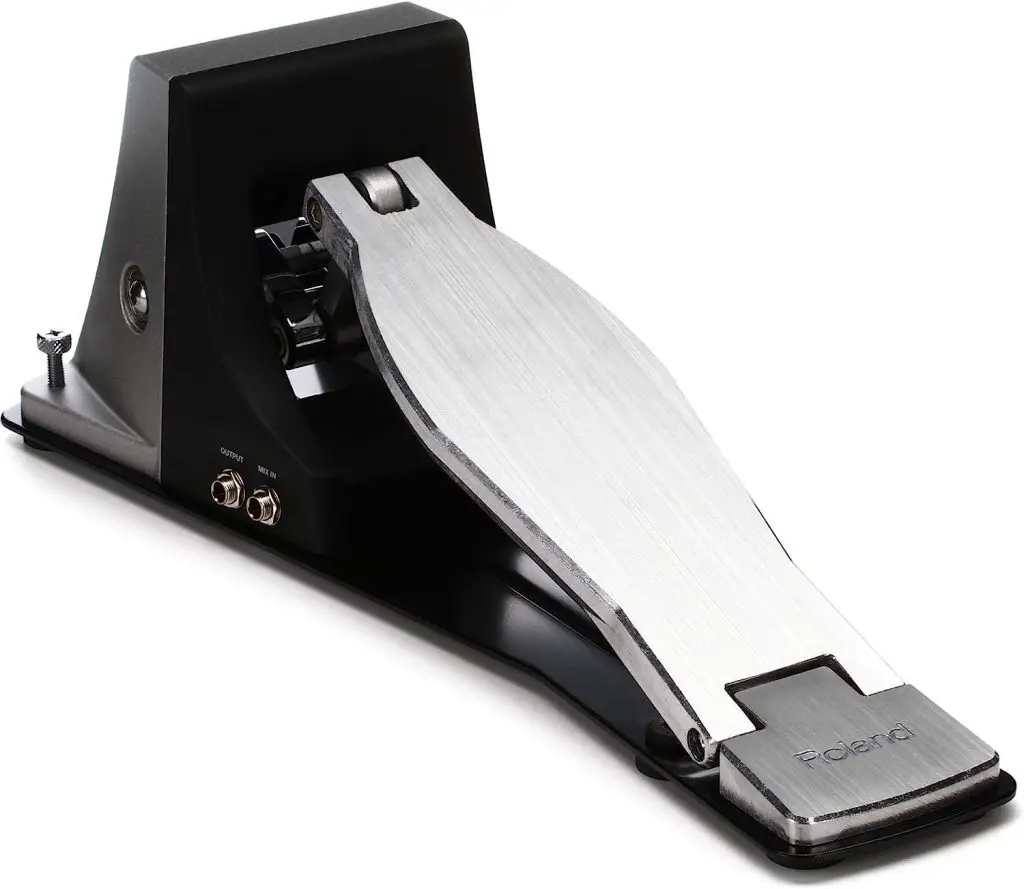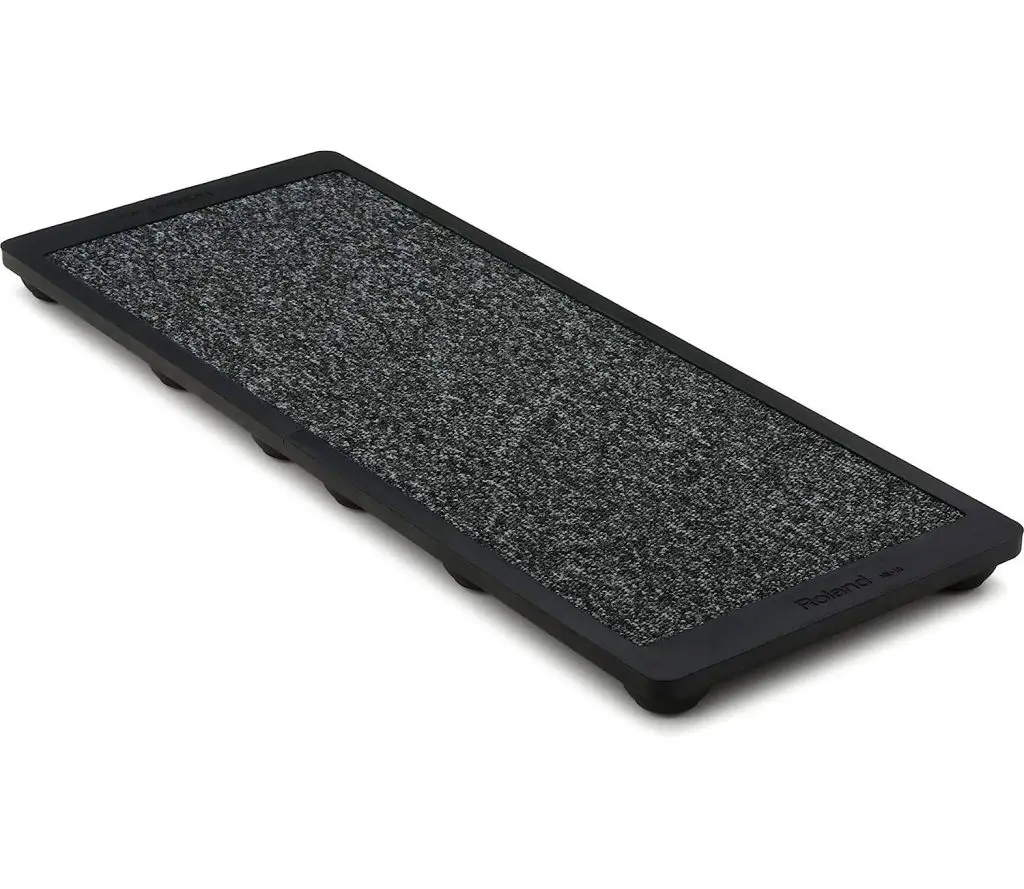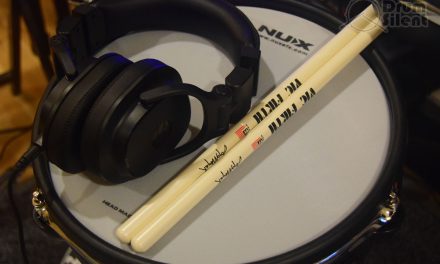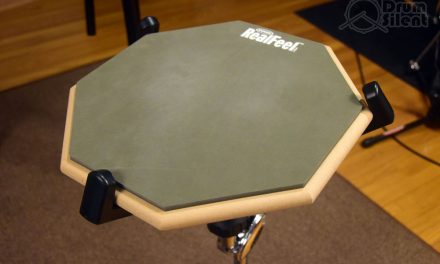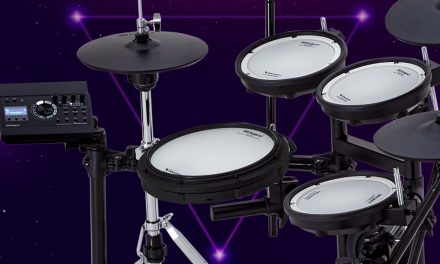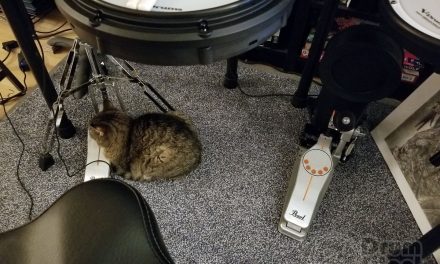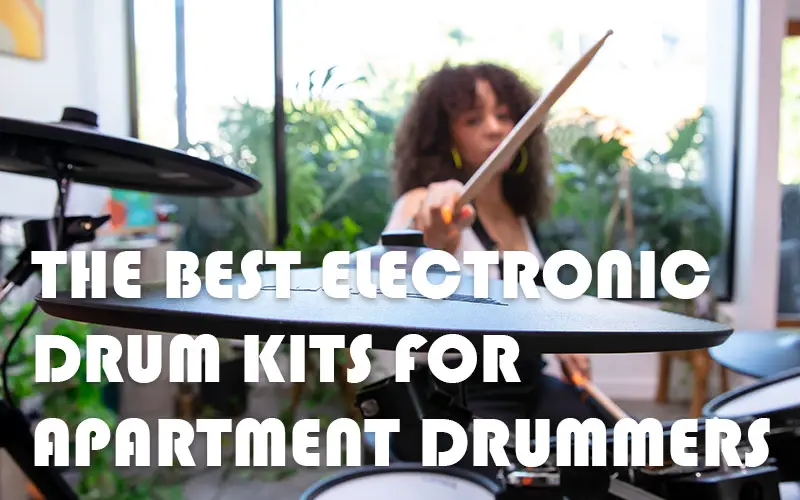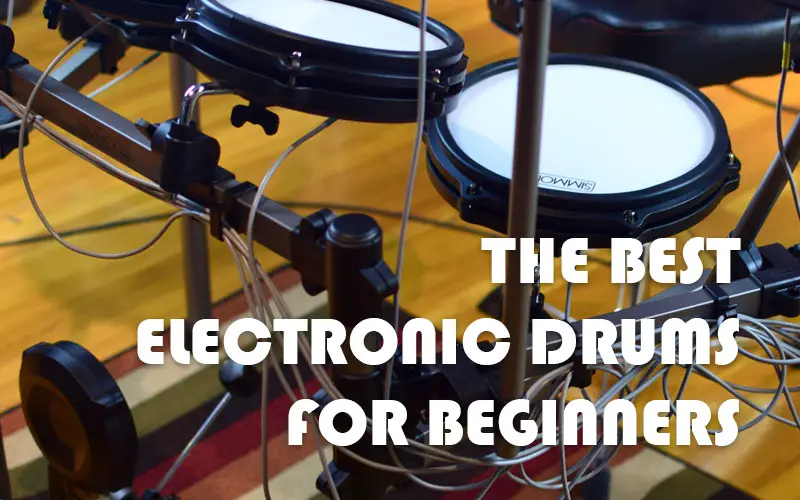It might be possible to sound proof an apartment depending on the type building you live in. After taking a look at what all is involved, it might be better to ask if it’s worth the time and money investment and if it’s worth the trouble.
Managing Sound Projection and Vibrations
The biggest issue with an acoustic drum kit is the sound projection and vibrations. Drums create a lot of resonant vibration, which is what is mostly passing through walls, floors and ceilings.
The end goal of any sound proofing job involving drums is going to be to reduce the amount of vibrations passing through everything. Even a decent amount of sound proofing in an apartment building could still result in neighbors being able to easily hear your drums, they’re just that loud and that volatile when it comes to sound control.
Sound proofing an apartment could potentially involve the following:
- Replacing hollow doors with solid core doors.
- Filling in any gaps in walls, door and windows with sealers.
- Adding lots of sound absorbing materials to the walls, ceiling and floors to reduce vibrations and control acoustics.
- Using bass traps in corners and adding furniture to absorb sound vibrations.
- Putting your drum kit on a riser to reduce vibrations going into the floor.
Playing drums in an apartment is always going to be experimental and situations could vary. That’s why if you are specifically in an apartment it’s best to combine sound proofing along with lowering the volume of your drum kit.
To lower the volume of your drum kit you could try things like:
- Using low volume cymbals.
- Using low volume drum heads.
- Using drum mutes.
- Maybe even consider switching to an electronic drum kit.
Now let’s discuss some of the sound proofing issues.
Apartments Might Not Allow Extensive Sound Proofing
Depending on the type of rental lease you have, your landlord might not want you doing many of the things that would be required to soundproof an apartment. The type of things you’ll need to do could be considered permanent modifications. You might also be required to remove any soundproofing modifications you installed when you move out. This can be a big hurdle when renting.
For example, it’s most likely unreasonable to expect to be able to replace doors and windows with more sound proofed materials. The same could be said about installing lots of sound-proofing materials onto the walls, floors and ceilings. Things like this could be hard to reverse or remove and could get you into trouble when you move out. So keep this in mind if you are renting and don’t own.
Solid Core Doors
Solid core doors do a much better job of dampening sound and vibrations than hollow doors. You can usually figure out if a door is solid or not by just knocking on it.
In most of the apartments I’ve lived in, the only door that was a solid core door was the main entry. Every door in the unit is usually hollow. You probably won’t be able to replace these. The cost and trouble of replacing doors in a rented apartment isn’t going to be worth it. So if sound proofing is something you’re going to want to attempt, it’s worth it to look for a place with solid core doors before you move in.
Sealing Gaps
This is another thing that might not be feasible to do in a rented apartment, but would be necessary to really get sound under control. If your doors, windows or even walls have any gaps, sound and vibration will flow through much more easily.
There are acoustic sealants that are specifically made for the purposes of controlling sound and noise bleed. These are usually more of a permanent solution for filling in gaps around walls and windows.
For doors you can look into door seals and sweeps. These can fill the gaps on the top, sides and on the bottom while still allowing you to open and close the door.
Soundproofing Insulation and Materials
This is more of a solution for if you are still in the process of putting up walls or installing new floors. So this can usually be ruled out for apartment goers who are renting. If you own a condo style apartment and have the option to renovate the place more extensively then soundproof insulation could be worth looking into. It’s also a great option if you own a home and want to soundproof a room with some more serious materials.
For more soundproofing material ideas check out the soundproofing materials section over at Soundproof Cow.
Soundproofing and Sound Absorbing Materials
This is another one that you may or may not be able to get away with in an apartment. Some of the more effective sound-proofing materials will require you to use adhesives and fully cover the walls or insulate the inside of the walls. Something like that is probably not feasible when renting.
Wall Hanging or Free Standing Materials and Panels
When renting an apartment, you’ll want to focus more on non-permanent sound absorbing panels that can be hung on walls, leaned up against walls, or even set up as free-standing panels on their own. If you are specifically trying to dampen drum sounds, you could try something like setting up a ring of sound absorbing panels directly around your kit to dampen the sound more at the source rather than at the walls.
Sound absorbing partitions can work well for near field sound dampening, and could be worth looking into. You could use them to build a cubicle of sorts around your drum kit. It won’t completely block all the sound but can help when combined with other materials on the walls.
Sound Absorption Ratings
Another thing to think about when looking for and installing sound absorbing materials is the material and sound absorption ratings. Class A acoustic panels are going to be the best option for maximum absorption, but they can be expensive. There are other types of sound absorbing foam that could be used as well, some work better than others. Usually the cost of the material increases with higher levels of sound absorption, so the best sound absorbing materials will likely cost more.
For some more expanded sound absorption material ideas check out the sound absorption material section over at Soundproof Cow.
Drum Kit Platforms and Risers
The floor can be a trouble spot for sure. Even with more quiet drum kits, the floor tends to still be an issue because you get vibrations going straight into the floor from hardware such as racks and stands as well as the kick drum.
If you live in a place with hardwood floors, especially in older buildings with thinner flooring and ceilings, you’re going to have a hard time resolving the floor vibration issues. If you live in a place with concrete floors or better insulated floors and ceilings, the battle will be a little easier.
It can be worthwhile to look into building a platform or riser that helps isolate your entire kit from the floor. Drummers have been able to do this with large sheets of plywood or boards resting on top of rubber padding of some kind. Common things to use for padding for drum risers are tennis balls or other small rubber balls cut in half, or foam such as sylomar. Sylomar tends to provide very good results but it can be expensive.
Drum kit risers like this can work for both acoustic and electronic drum kits.
This video from Demonic Sweaters on Youtube is a great example of what you can do with a DIY drum riser.
Low Volume Cymbals and Drum Heads
If you are trying to sound proof an apartment for acoustic drums, you’re going to find the the projection and volume from a traditional drum kit is pretty hard to control. That’s why it’s also a good idea to consider some low volume drumming gear in addition to any sound proofing efforts.
Low volume drum heads and low volume cymbals are a great place to start. These can be swapped onto your existing kit, and allow you to keep playing your familiar kit with much reduced volume. The projection and resonance from low volume equipment such as this is largely reduced. Using something like the Zildjian L80 cymbals or the Evans dB One cymbals and drum heads can achieve as much as a 80% reduction in volume, which can really help out when trying to play in an apartment.
The Evans dB One cymbals and drum heads can reduce volume by up to 80%
Further Tackling the Pedal Vibrations
Sometimes the kick drum or even the hi-hat pedal can still be a problem with electronic drum kits, even with low volume kick drum heads. The thumping can still be an issue depending on the type of pad and kick pedal you are using.
Some drummers find that switching over to a kick pedal controller such as the Roland KT-10 low noise trigger pedal can help get the excessive vibrations from their kick pedal under control. This can be an easy for an electronic drum kit since you can just plug and play and replace your existing kick pad. This could also be an option for an acoustic drum kit if you don’t mind going for somewhat of a hybrid approach and introducing some electronic elements around your kit.
Another tool available out there for pedal controllers is the Roland NE-10 noise eater boards. These are heavy duty platforms that are sized for pedal controllers and even can fit some kick pedal towers along with kick pedals. They can help reduce noise and vibrations going into the floor from the pedals on your electronic drum kit.
The Roland KD-10 Kick Pedal
The Roland NE-10 Noise Eater Pad
Location, Location, Location
It might be unreasonable to try to soundproof an entire apartment, but it’s more reasonable to try to soundproof a single room. One of the best ways to get away with trying to soundproof a room in an apartment building is to choose a room that shares minimal walls with neighbors.
A good example of this is an apartment I lived in a few years ago. It was ideal for drumming in an apartment, at least with low volume or electronic drums. The room was a centrally located bedroom within my unit, meaning it had no shared walls with neighbors. My unit was also on the ground floor, so that meant no downstairs neighbors. The room was also carpeted, which helped give it a little bit of a leg up when it came to sound proofing. I basically only had to worry about the neighboring room directly above, and I could also assume that the room in the unit above me was also carpeted, which was ideal for noise control.
That was a great head start. From there, I added some sound panels to the ceiling using small pins that would barely leave any marks or holes when I removed them. I also put a few things on the walls and that was about all I needed to do.
Choosing a location like that made it so much easier to set up a low volume drum room in an apartment and minimal work was required on my part. So planning ahead and finding an apartment with a room like that can really help.
Conclusion
As you can see, sound proofing an apartment so that you can play drums presents many challenges. If you are willing to be patient with experimentation, and have the ability to choose an apartment that gives you a good head start, things will come together and you’ll be able to play drums in your apartment. On the flip side, some apartments will be extremely challenging to soundproof for drums and you might need to make more concessions.
I’d recommend avoiding anything too extreme since you don’t want to damage walls, ceilings and floors in a rental situation. And be ready to accept the fact that you might not be able to achieve a complete sound proofing, but can likely get close enough to allow you set up some low volume drums or electronic drums.

